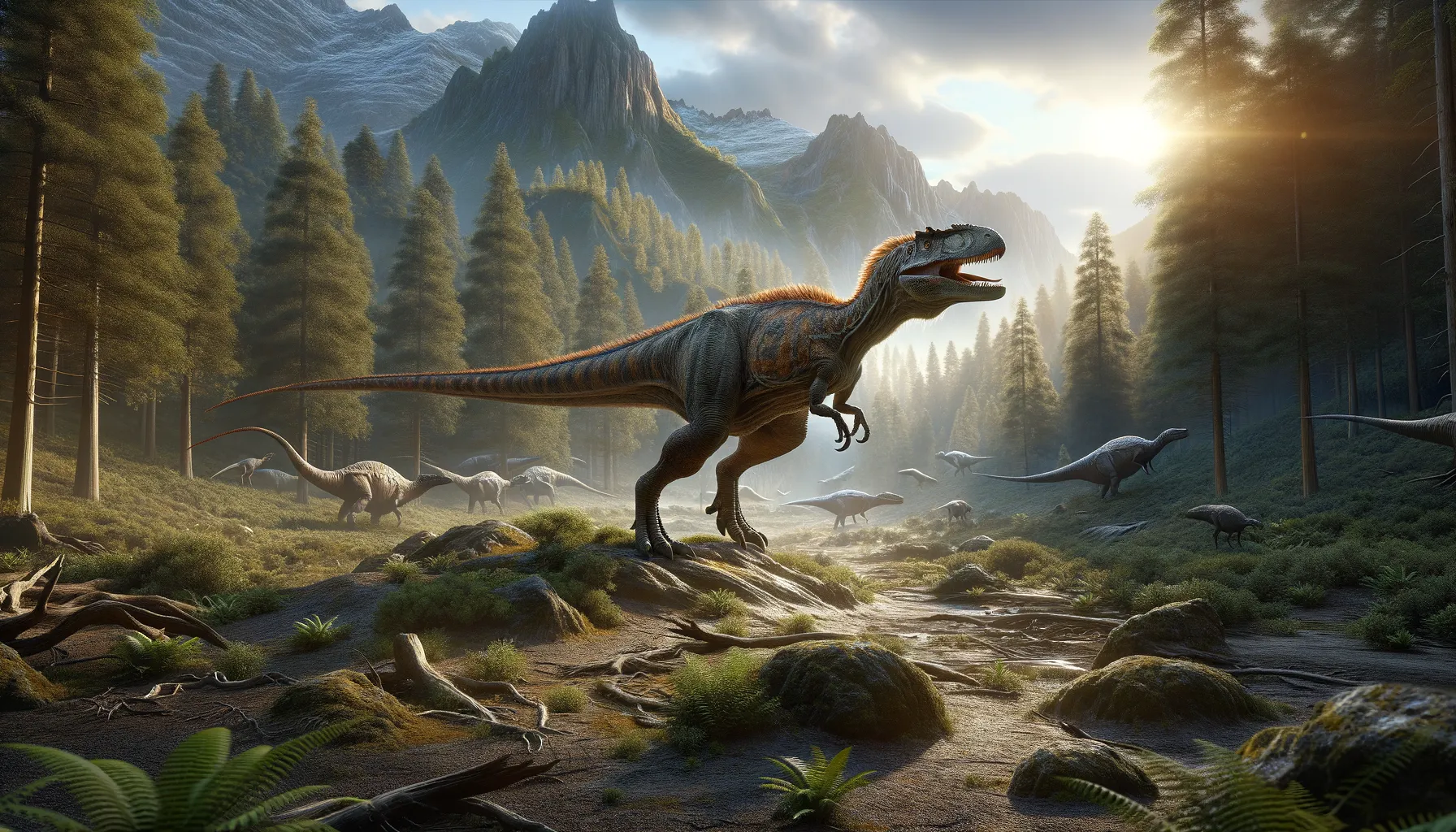
Chuanqilong
A fascinating iguanodontid from ancient landscapes!
Period
Cretaceous
Length
Reached lengths of about 6 meters.
Height
Stood around 2 meters tall at the hip.
Weight
Weighed approximately 2000 kilograms.
Chuanqilong was a medium-sized dinosaur that roamed the Earth during the Cretaceous period. It is known for its interesting mix of characteristics, similar to those of advanced iguanodontian dinosaurs. Fossils of this dinosaur have been primarily found in China, shedding light on its structure and habits. The discovery of Chuanqilong has contributed significantly to our understanding of dinosaur evolution in the eastern part of the ancient continent of Asia.
Diet
Chuanqilong was herbivorous, feeding on plants common in its environment. Its diet likely consisted of ferns, cycads, and conifers, similar to many other dinosaurs of its kind.
Hunting
Being herbivorous, Chuanqilong did not hunt other animals. Instead, it grazed on the vegetation and may have used its beak and chewing apparatus to process a variety of plant materials.
Environmental challenges
Chuanqilong lived in a region that experienced environmental changes, including fluctuating temperatures and periods of drought. These challenges would have affected the availability of food sources. The dinosaur had to adapt by possibly migrating or changing its dietary preferences. Additionally, it would have faced threats from predators and had to develop strategies for protection.
Speed
Its speed is believed to be moderate, typical of a medium-sized dinosaur.
Lifespan
Estimated to have lived around 20 to 30 years.
First discovery
Discovered in Liaoning Province, China, in recent years.
Fun Facts
- Chuanqilong was a medium-sized dinosaur that lived approximately 120 million years ago during the Early Cretaceous period.
- The name 'Chuanqilong' means 'Sichuan dragon,' referencing the Sichuan province in China where its fossils were discovered.
- Chuanqilong was a member of the ankylosaur family, known for their armored bodies and club-like tails.
- Unlike some of its heavily armored relatives, Chuanqilong had a relatively lighter build with less osteoderm (bony armor) coverage.
- Fossils of Chuanqilong were first discovered by a Chinese-Canadian team of paleontologists.
- The Chuanqilong adds important information to the evolutionary history of ankylosaurs, showing diversity in their size and armor features.
Growth and Development
Chuanqilong, like many dinosaurs, likely hatched from eggs and underwent rapid growth in its early years to increase survival prospects. Its growth rates probably slowed down upon reaching adulthood. The developmental process might have involved changes in physical features, such as the strengthening of bones and the development of its beak for effective feeding.
Habitat
The habitat of Chuanqilong was likely varied, including forested areas with abundant plant life and open plains that provided ample feeding opportunities. The climate was probably warm and temperate, with distinct wet and dry seasons. It would have needed access to water sources, both for drinking and aiding in food digestion.
Interaction with other species
Chuanqilong lived alongside various other species, including both herbivorous and carnivorous dinosaurs. Its interactions with herbivorous species might have been competitive, particularly when food resources were scarce. Predatory dinosaurs presented a constant threat, requiring Chuanqilong to stay vigilant and possibly band together with others for protection.
Natural lifespan
Chuanqilong could live up to 30 years in natural conditions.
Reproduction
Chuanqilong reproduced by laying eggs, likely in nests constructed in secluded or protected areas to reduce the risk from predators. Parental care might have included protecting the nests from threats and possibly caring for the young after they hatched.
Social behaviour
This dinosaur probably exhibited some level of social behavior, potentially moving in small groups to forage for food. Such group dynamics could offer protection against predators, as well as increased success in finding food sources. Communication among group members may have been crucial for survival.
Fossil locations
Fossils of Chuanqilong have mainly been found in the Liaoning Province in northeastern China. This region is known for its well-preserved fossils, providing valuable insights into the life and environment of dinosaurs. Such discoveries contribute significantly to our understanding of dinosaur diversity in Asia during the Cretaceous period.
